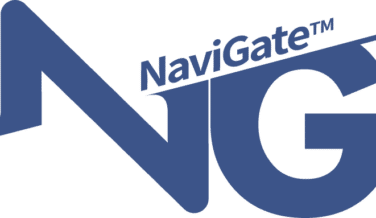By Ashwani Saigal, Vice President of Broadband, Connected Home Division of Technicolor, known as Vantiva
Network service providers (NSPs) are quickly coming to the conclusion that effective ultra-broadband and gigabit services strategies will hinge not just on technical performance, but on the quality of the end user experience.
While the blinding download speed of ultra-broadband – up to 10 gigabits – gives NSPs the ability to offer a wide array of services, including smart home, multiscreen access, as well as 4K/UHD, over-the-top (OTT) video, and more — it is now understood that successful NSP business models requires providers to make the necessary investments in their infrastructure to help deliver these services in an integrated and intuitive manner.
This is where standards and interoperable technologies will play an important role.
In this article we explore how a strategy based on open software allows service providers to increase the number of revenue-generating offerings to subscribers without creating confusing, difficult-to-manage experiences that detract from the customer experience.
In this context, 2018 was a pivotal year for both standards and for the industry’s shift toward placing a greater emphasis on the end-user experience. While speed and bandwidth continue to be critical, we are seeing many facets of the user experience recognized as important in delivering value to subscribers.
For example, the quality of the in-home Wi-Fi service has emerged as a very prominent user experience issue. As more wireless-capable devices become present in the home, having a connection that is fast, reliable and available in every part of the home enables the customer to consume the growing number of services in which users are interested.
This is just one example of how NSPs are thinking beyond broadband access to evaluate their role in improving the customer experience — especially as new connected consumer devices permeate the home. In fact, Wi-Fi has rapidly been recognized as an enabler of offerings generated by the presence of these new devices (such as home automation, security, or Internet-of-Things services).
Criticality of Standards Higher Up on the Stack
In order to have a scalable model for delivering money-making application-based services, NSPs need to decouple any dedicated dependencies between hardware and software elements in the network.
Standards will play a critical role in this process. The industry is recognizing the need to develop standards around the “gateway stack” — which is the layer responsible for the routing and the access termination in a box. This is where embedded software performs functions for IP tables, filtering, and routing. While end user does not see this activity as being part of the user experience, ensuring that this environment managed in a common manner is the only way to guarantee that the industry can support a heterogeneous environment in which multiple hardware and software vendors coexist to delivery value to subscribers.
On top of gateway stack, different types of NSPs — telcos and cable providers — are developing standards that make it possible to mix and match services involving different software developers.
For instance, in the telco world, there is OpenWrt-based community — which has formed around a Linux operating system that provides a fully writable filesystem with package management. This frees telco operators from the application selection and configuration provided by individual vendors so that NSPs can customize devices through the use of packages to suit any application.[1]
On the cable side of the equation there is a tremendous amount of momentum behind the Reference Design Kit for Broadband (RDK-B). This is an open source initiative to standardize functionalities for broadband devices enabling cable operators to efficiently deploy different services to a large customer base by making possible to more easily manage different functions — including Wi-Fi and Multimedia over Coax Alliance (MoCA) and Internet of Things (IoT) controllers.[2]
Technicolor is a market leader and has developed a broad set of offerings based on both OpenWrt and RDK-B standards that are enhancing the value proposition our NSP clients can bring to their subscribers. When a consumer at home wants to use value-added services — whether it’s video, Wi-Fi, or IoT — they really are not interested in what’s under the hood. What they want to see is they have a seamless, very efficient user experience that is decoupled from the underlying gateway stack as well as underlying access technologies. That is what these standards enable.
Building on the Open Standards Trend
Moving into 2019, service providers will have to expand even further their efforts to find mechanisms that abstract the underlying routing stack from the application platforms.
That is why Technicolor has placed such an emphasis on playing a leadership role in the Linux Container framework (LXC). This framework allows service providers to work more effectively with application developers by providing a mechanism which when integrated with lifecycle management (LCM) functionality, enables operators to control applications that reside on the gateway.
NSPs can develop, install, manipulate and administer applications at a level which is transparent to the underlying gateway stack. The Linux Container standard introduces high levels of efficiency by limiting the amount of CPU and memory that is needed to run applications on the gateway CPE. It makes it possible to run different applications independently without affecting the overall gateway functionality — the core underlying gateway functionality is not affected by these applications. The mechanism also enables application portability, which opens the door to reaping and expanding the benefits of application innovation in the industry. This is because that once an application is developed using Linux Containers, industry players — including application developers and NSPs — can easily run the same application on any another platform that supports the Linux Container mechanism.
This is why Technicolor is leading the effort to expand and integrate this initiative with different standards bodies, including OpenWrt, Broadband World Forum, Purple Foundation and the RDK Consortium. It is the key to the portability, interoperability and extensibility that will allow the NSP community to harness innovation to enhance their relationships with subscribers.
[2] https://wiki.rdkcentral.com/display/RDK/RDK-B+Overview











